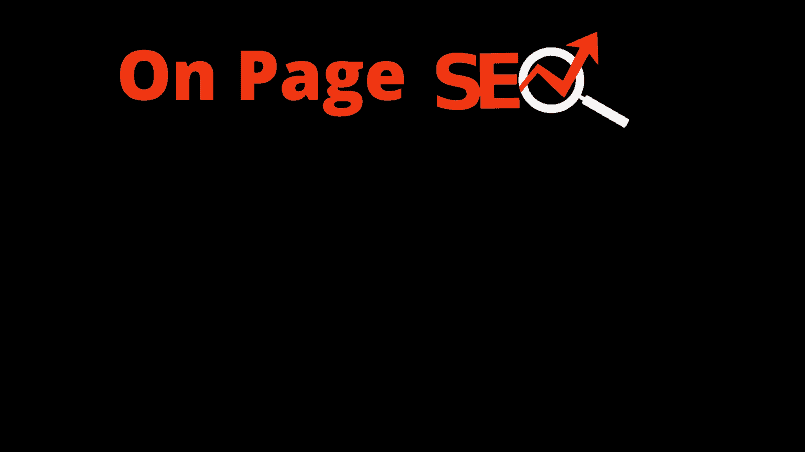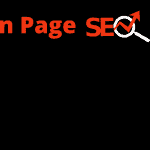In this guide, I will tell you how you can improve organic traffic to your website via On-Page SEO. SEO stands for Search Engine Optimisation. It is basically a process of applying different techniques to your website in order to rank your website in the top slots in google search results.
There are generally two types of SEO. On-Page & Off-Page SEO. As the name indicates, On-Page SEO is everything you do on your website, like optimising your post, titles, optimising images and graphics on your posts, using target keywords on your posts. Off-Page, SEO is something you do outside your website, like creating backlinks, social signals, guest posting etc.
In this article, our mail focus will be on On-Page SEO to drive traffic directly from google search results. I have personally followed the below basic steps, and within days, I have seen a difference in the traffic.
Table of Contents
STEP 1: FOCUS KEYWORDS PLACEMENT & FREQUENCY
For those who don’t know what a keyword is, I will explain it in simple terms. A keyword is simply a topic in your niche, which you will write about. They are words or phrases you type in a google search. Let say you are looking for the best DSLR camera, and you type “Best DSLR Cameras” is basically a keyword. As it contains several words, it is called the long tail keyword.
Many websites are competing against each other on a specific keyword. They use multiple techniques that come under the domain of SEO and improve their rank on google search results. The goal is to rank on the top 10 results of google search.
As a beginner, focus on keywords with easy difficulty having less search volume. By following this technique, you are going to rank on google easily.
After choosing your keyword, make sure to mention it in the title of your post and at least in one subheading. Sparkle your keyword within the main post of your article. Ensure to use your keyword where it makes sense. Don’t just start using it everywhere.
STEP 2: H TAGS / HEADINGS & SUBHEADING OPTIMIZATION
H Tags or Header tags are different headings used to separate sections & subsections in your content so that readers can easily read and understand your content based on the various areas. It helps the readers to navigate within the sections efficiently.
Headers tags play a significant role in indexing your content in Google search. A search engine can easily crawl and understand the content where the pages are displayed in a structured and organised manner.
SUGGESTIONS FOR USING TAGS:
- As mentioned earlier, H1 tags are generally used for the post or an article title, so make sure to use only 1 H1 tag per post.
- As the structure of an article is significant for indexing and letting the readers navigate within the article, use tags in a properly structured manner using H1 to H6 tags.
- Make sure to place your focus keyword in tags where it seems fit.
- Make sure to use H2 tags for your subheadings and always mention your targeted keyword in at least one subheading of your article.
STEP 3: LINKING
When an article is linked to another article within a website, it is called internal linking or inbound linking. It is known as outbound linking when it is linked to a post outside of your main website to another website.
Linking your article can add value and increase traffic to your posts. While reading an article on your website, readers might be interested in checking another relevant article you have posted on your website.
By external linking or linking to authority websites, you can build authority for the content you created and create an option for referral linking.
When you are getting decent traffic to your website, you can add affiliate links to your posts and earn affiliate commissions.
STEP 4: OPTIMISE THE TITLE
The title of any post is critical, and it lets the reader decide whether to proceed to the post or not. For title optimisation, I suggest you install a WordPress plugin called “Monster Insights”. It is mainly for analytics and tracking your visitors.
Additionally, it has an option called “Headline Analyzer”, it analyses your title based on multiple factors and gives you a score for each title. You should improve your title to get at least 70 scores which is minimum as recommended.
The headline analyser also gives you suggestions on how to improve your current title. Please write at least ten versions of the title, then pick the attractive one and optimise it using the monster insight plugin.
STEP 5 INSTALL ON-PAGE SEO PLUGIN
WordPress has various plugins you can install and optimise your website. Yoast SEO is a leading one. You can use the basic free version to get the job done.
Yoast SEO gives you various suggestions on optimising your article by adding images, improving word count and so on. It will simply tell you what needs to be done to improve your article from SEO’s perspective.
At the end of the page, it gives you the “Meta Description” option for each of your posts. The meta description shows you how google will preview your article in search results. All you need to do is write the title and description in each field to let the google display in the search results. Ensure to mention the focus keyword in the meta description field.
Brian from Backlinko created a meta description formula you can use it in your meta description. It suggests that meta description consists of
- Content Overview
- Benefit
- Content Description
Formula:
This is a (content overview). Learn how to get (specific benefit) from this (content description)
Example:
This is (a complete guide to on-page SEO). Learn how to get (higher rankings) with this (in-depth post)
STEP 6: SLUG
Slug is the end part of any URL of a particular page of your website. For example, www.shahstech.com/blog is the URL and “Blog” is a slug. It tells us about the specific page within the website.
In WordPress, you get an option in every post to set the URL Slug. This option is often referred to as “Permalinks.”
While optimising the URL, make sure to make it short and mention the target keyword. You can also do it with Yoast SEO in the slug section.
STEP 7: OPTIMISING GRAPHICS
Adding images, infographics and statistics will make your posts attractive and exciting. It enhances user experience, and people love visual content. They might share your posts, and it will give a positive signal to Google that people love it and it ranks your article.
Before adding images to your posts, you should optimise them, like compressing the image to reduce load time. You can convert your jpeg images/thumbnails to compressed ones.
You can compress your images one by one before posting them on your webpage. Many websites are online to compress your pictures from jpeg/png to WebP format. WebP format is the most compressed one and is usually used on websites.
After compressing your image, you can upload it to your website. For image SEO, go to settings on the left to see the Alt Text option and write down your focus keyword on the alt text field. In this manner, you are mentioning your keyword in the image.
STEP 8: PUBLISH YOUR POST
Before publishing your article, you can see the suggestions from Yoast SEO where you can improve on-page SEO for your blog. Follow as many recommendations as you can to fully optimise your article. Recommendations may be based on linking, keyword phrase density, adding images and so on.
You can make minor changes based on the suggestions, which can make a huge difference. Make it as much better as you can.

